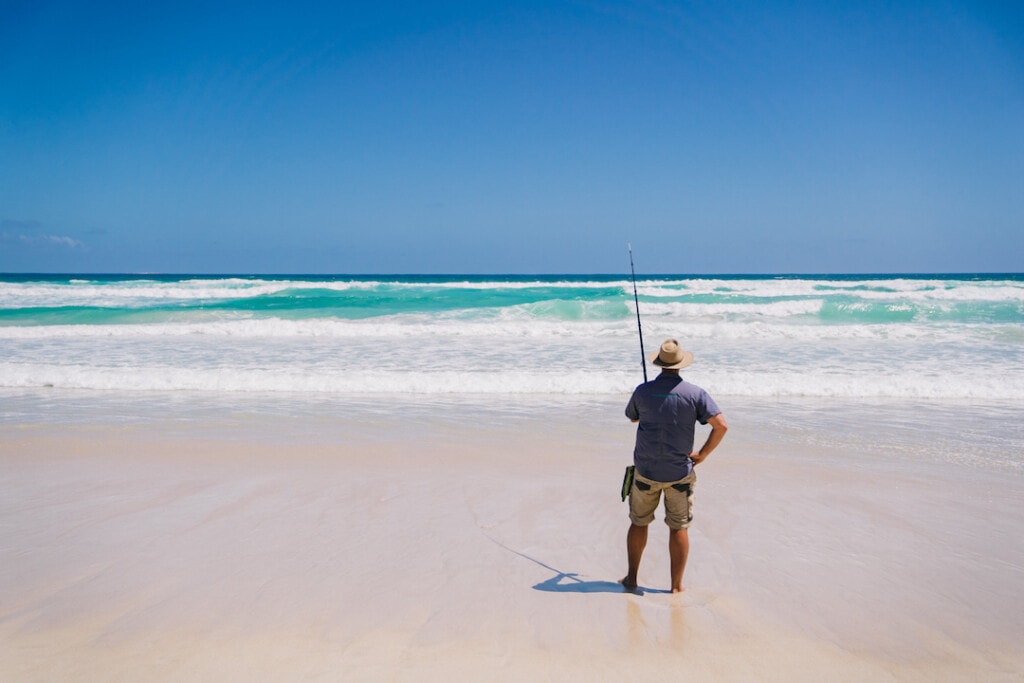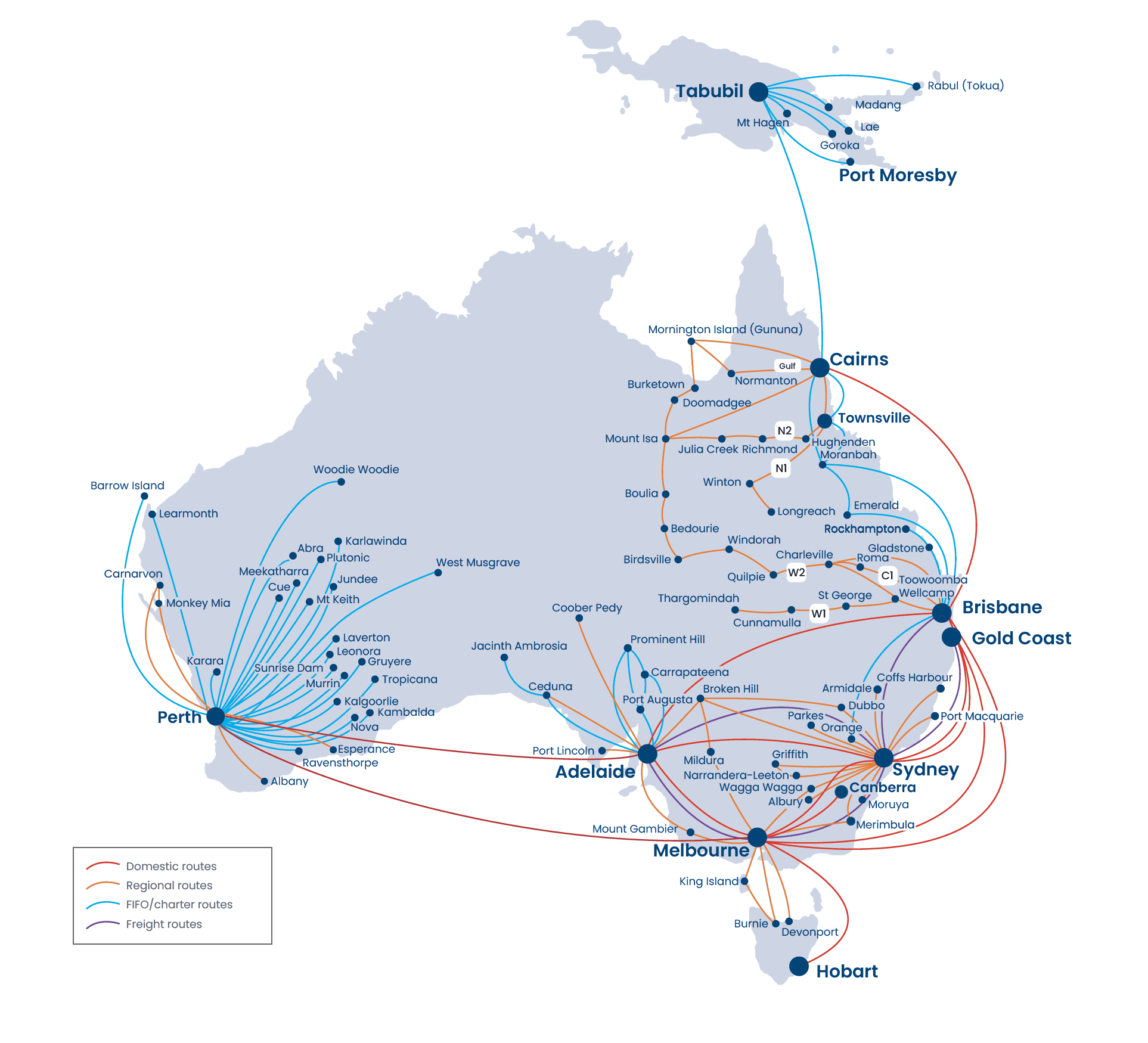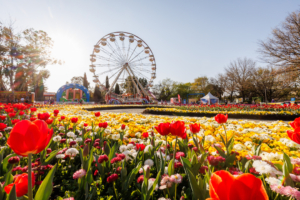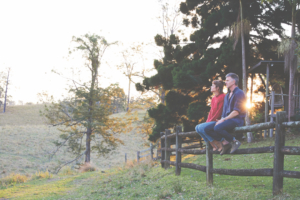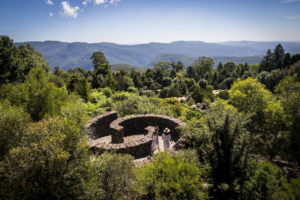If Port Lincoln is known for anything, it’s the fishing industry. Especially the tuna and export-grade Southern Bluefin (SBT) variety, much sought after for sashimi in Japan.
Port Lincoln was named nostalgically by Matthew Flinders in 1802 after his home county in England. But the area only saw its first settlers i n 1839. The pleasant land surrounding the large sheltered cove named Boston Bay was even shortlisted as a site for the fledgling colony’s capital. A fair contender at three times the size of Sydney Harbour.
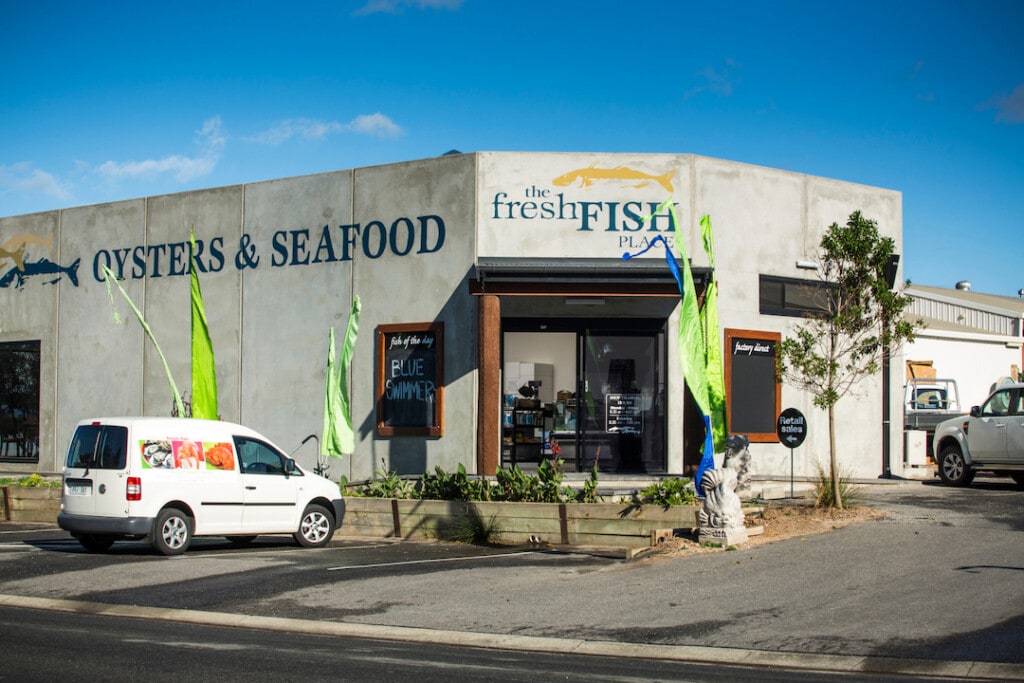
Sealing, whaling and agriculture kicked off the economy well before fishing gained prominence. Tuna fishing started in the 1950s and since the ’90s, modern tuna ranching (and processing) techniques has enabled Port Lincoln to cash in on the lucrative Japanese market, reeling in more than $100 million annually. One assessment ranks Port Lincoln as the city with the highest number of millionaires per capita in the country. Hence, the self-proclaimed title “The Seafood Capital of Australia”
With the fishing industry stabilised now, with quotas enforced, Port Lincoln has started pursue other means of generating income. The local tourism industry now outstrips the lucrative trade in tuna. So why make the trip to Port Lincoln – what is there to see and do?
Welcome to the Tunarama Festival
In keeping with its seafood heritage, the Tunarama Festival has been held over the Australia Day long weekend for the last 58 years. A true family festival, it features a wide array of community events, arts and cultural displays. Plus, local market stalls and, of course, some of the freshest seafood in the world.
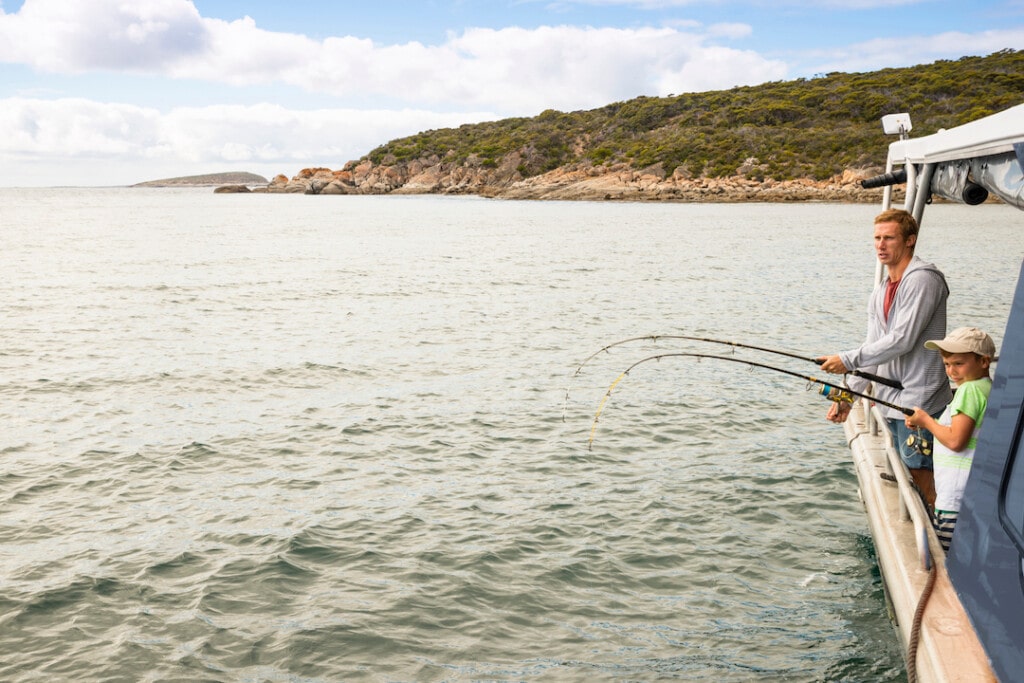
Meeting great white sharks in Port Lincoln
Port Lincoln is also the place to visit for close encounters with some of the ocean’s most impressive apex predators; great white sharks. Great whites are are often misunderstood, and a up-close and personal experience with them will no doubt change your mind about these beauties. Just getting out there on the ocean to ‘meet’ them is an experience in itself. A 2018 survey completed as a part of the Census for Marine Life, found that there are only about 3,500 great whites left in the world, so they also need more positive attention and support.
Swimming with sea lions at Seal Cove
Closer to shore, you can also swim with sea lions on a half-day tour to Seal Cove. Splash around with these delightful and intelligent critters who just love to show-off for you. Underwater, search the sea grass for one of the ocean’s most beautiful creatures, the leafy seadragon. They’re only found here in Australia’s southern waters.
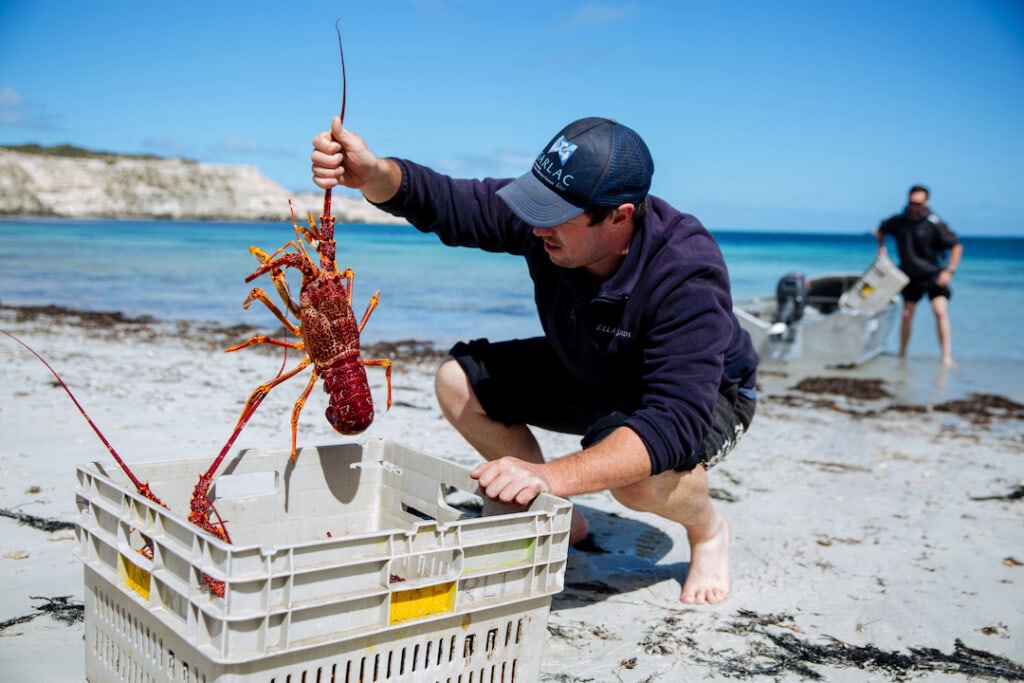
Restaurants and cafes in Port Lincoln
It’s not all about seafood here. There’s local pork and bacon, Eyre Peninsula grain-fed beef and lamb; locally grown fruits and vegetables and a range of products including olive oil, honey, chocolates and nuts. Not to mention the delicious bakery products made from locally grown and milled grain.
Head to the Rogue & Rascal Cafe for the best coffee in town. Del Giorno will satisfy your seafood cravings with an Italian twist. For a pub feed, try the Marina Hotel. If you fancy Chinese or Thai, Peacock Gardens will hit the spot. And wash it all down with a local craft beer or wine at Sarins Bar & Restaurant.
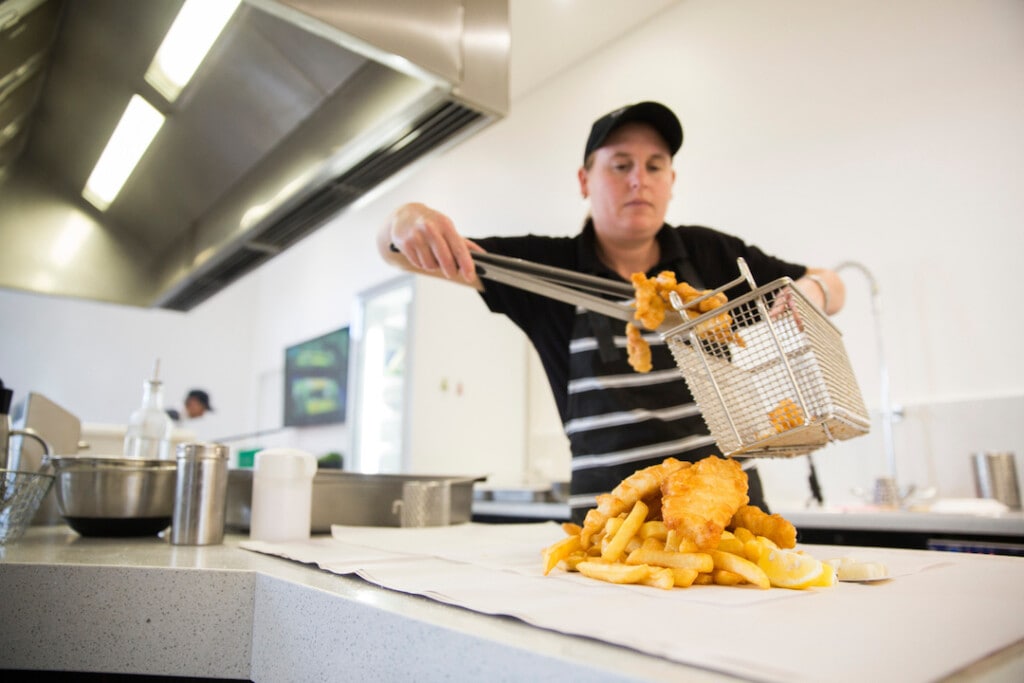
Wineries near Port Lincoln on the Eyre Peninsula
Port Lincoln is located at the southernmost tip of Eyre Peninsula. This giant, fertile promontory grows a surprising array of produce, including grapes.
South Australia’s premium wines need no introduction, but the Eyre Peninsula region is still new to the scene. According to renown wine critic, James Halliday; “The strong maritime influence of the Spencer Gulf, combined with patches of terra rossa over limestone soils similar to Coonawarra, make the area particularly suited to full-bodied red wine production from shiraz, merlot and cabernet sauvignon, while Riesling and chardonnay have also performed quite well.”
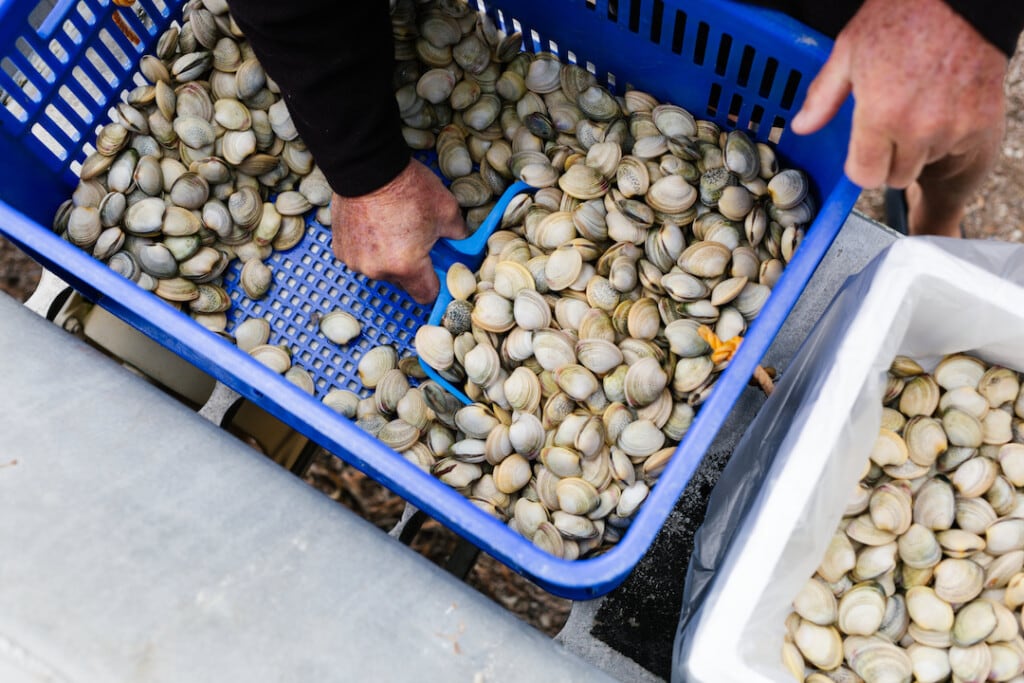
Take a gourmet tour to Coffin Bay and sample the famous oysters at 1802 Oyster Bar, grown in the ideal waters just across the road. Pour one of the excellent Lincoln Estates Sauvignon Blanc or Boston Bay Shiraz.
Travelling to Port Lincoln
Rex operates direct flights from Adelaide to Port Lincoln. Find more details on schedules and pricing here.
Want to continue the gourmet South Australian experience? Read more about the Eyre Peninsula’s offerings here.

